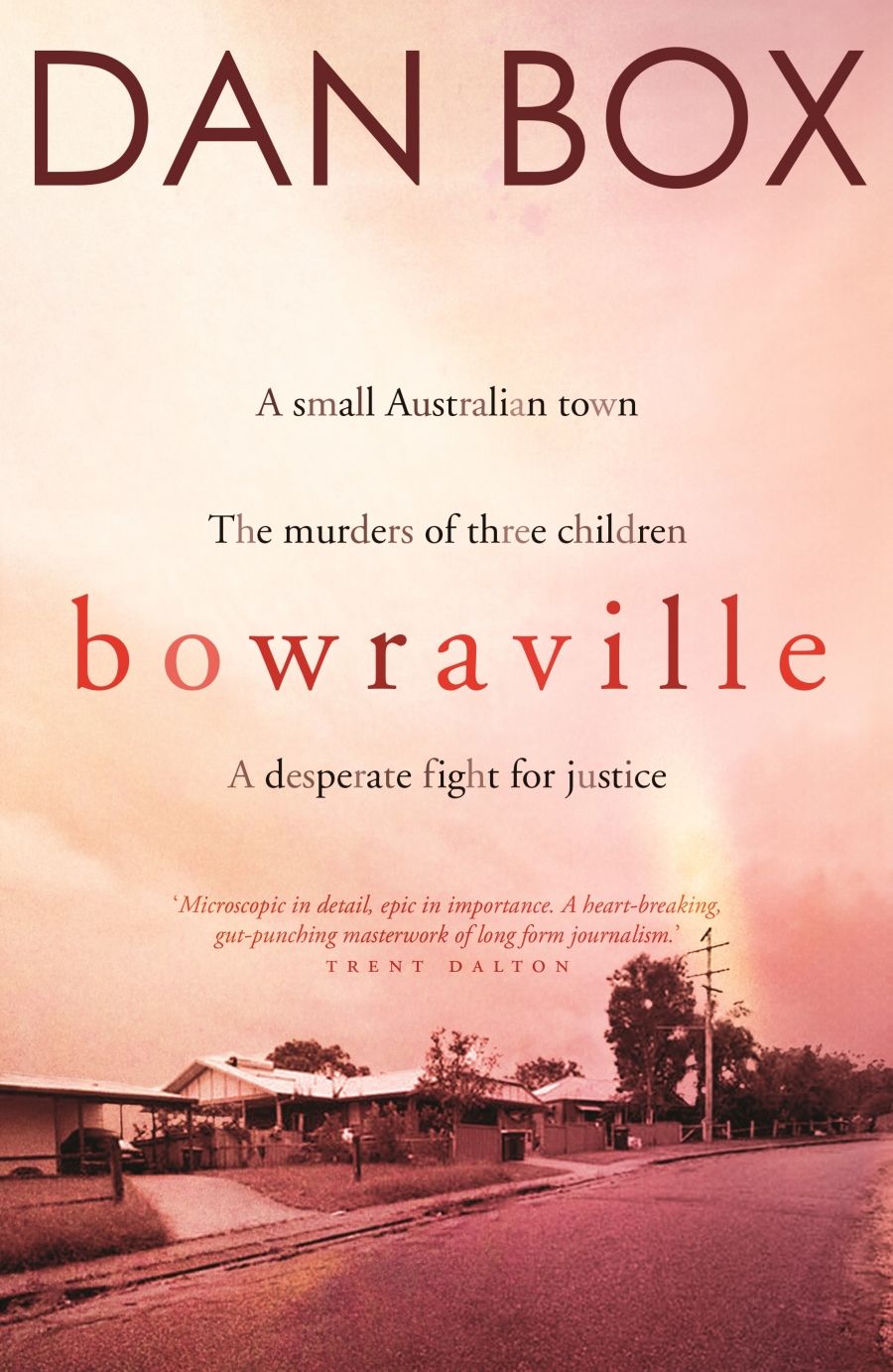
- Free Article: No
- Contents Category: True Crime
- Custom Article Title: Stephen Dedman reviews <em>Bowraville</em> by Dan Box
- Custom Highlight Text:
Dan Box is a crime reporter for The Australian. In September 2014, Homicide Detective Chief Inspector Gary Jubelin contacted him to ask him to write about the murder of three Aboriginal children from Bowraville in 1990–91. Box later began a podcast about the murders that ...
- Book 1 Title: Bowraville
- Book 1 Biblio: Viking, $34.99 pb, 325 pp, 9780143784395
When the cases finally went to trial in January 1994, the defence lawyers argued that their client should be charged with the two murders separately, and the judge agreed. After white witnesses testified that they’d seen Clinton hitchhiking after the time police believed he’d been killed, the labourer was acquitted in February and the Director of Public Prosecutions decided not to proceed with a trial for Evelyn’s murder.
In 1996, a task force was created to investigate the Bowraville murders. Gary Jubelin, assigned to the team, worked on improving communications and trust with the victims’ families. In 2004 Jubelin convinced the state coroner to hold an inquest into Colleen’s and Evelyn’s deaths. In 2005 ‘Hide’ was tried for Evelyn’s murder – and acquitted. When Jubelin contacted Box nine years later, it was in the hope that the publicity would persuade the Victorian government to overturn the rule of double jeopardy and to allow fresh trials. As the case headed to the High Court, Box ultimately became so involved in the investigation that he asked his editor whether he needed to recuse himself from covering it. The editor said no, and Box was called as a witness.
Bowraville is a detailed examination of the difficulties that can be faced when seeking justice for Aboriginal families whose children have been murdered. The mistrust between Bowraville’s Goori community and the local police hampered the investigation, as did the clear cultural differences. The Aboriginal witnesses tended to be less obsessed with clocks and calendars than the whites, and less comfortable with yes and no questions, which made them more suggestible when giving statements to police. In the first trial, jurors were more convinced by the white witnesses; the second case collapsed largely because the police relied too heavily on the testimony of jailhouse informants. Forensics proved to be of little use when evidence was lost or destroyed after the first acquittal.
Box contrasts the resources allocated to solving the backpacker murders with the situation at the Bowraville Police Station, whose lone detective made notes on butcher’s paper because the station lacked a computer. Box is unsparing in his description of Bowraville’s poverty and its history of clashes between the white residents and the Goori, many of them descended from the Stolen Generations and old enough to remember when Freedom Riders came from Sydney to protest the segregation of the local theatre.
 Bowraville, New South Wales (photograph via Wikimedia Commons/BowraBoy)
Bowraville, New South Wales (photograph via Wikimedia Commons/BowraBoy)
Bowraville isn’t a perfect book. The difficulty of determining the facts from so many peripatetic and often contradictory witness statements means that the overall effect is sometimes reminiscent of Rashomon with a touch of Catch-22: Box, becoming involved in the story more than twenty years after the murders, uses dates as chapter headings to try to help readers comprehend the narrative, but a more linear approach might have been easier to follow. There is little information about the suspect, who largely followed his lawyer’s advice not to answer questions from journalists. Unusually for a true-crime book, there are no photos or other illustrations. Obviously, the inclusion of photos of the victims might have been upsetting for their families, but some maps showing important locations and the distances between them would have helped readers to form a clearer picture of the events.
That said, Bowraville is undeniably an important book – not only because it does what any good true-crime book should do: showing us how crimes are really investigated and tried, debunking the television myth that all murders are solved instantly. Bowraville also shows how – even when the police are sympathetic – the system can disadvantage Aboriginal people, not just because of mutual distrust, but because of cultural differences that hinder communication and understanding.
Early in the book, Box mentions that he decided to investigate the case because of a belief that the Bowraville murders should be as well known as the Beaumont murders. He’s right: every Australian should read this book.


Comments powered by CComment